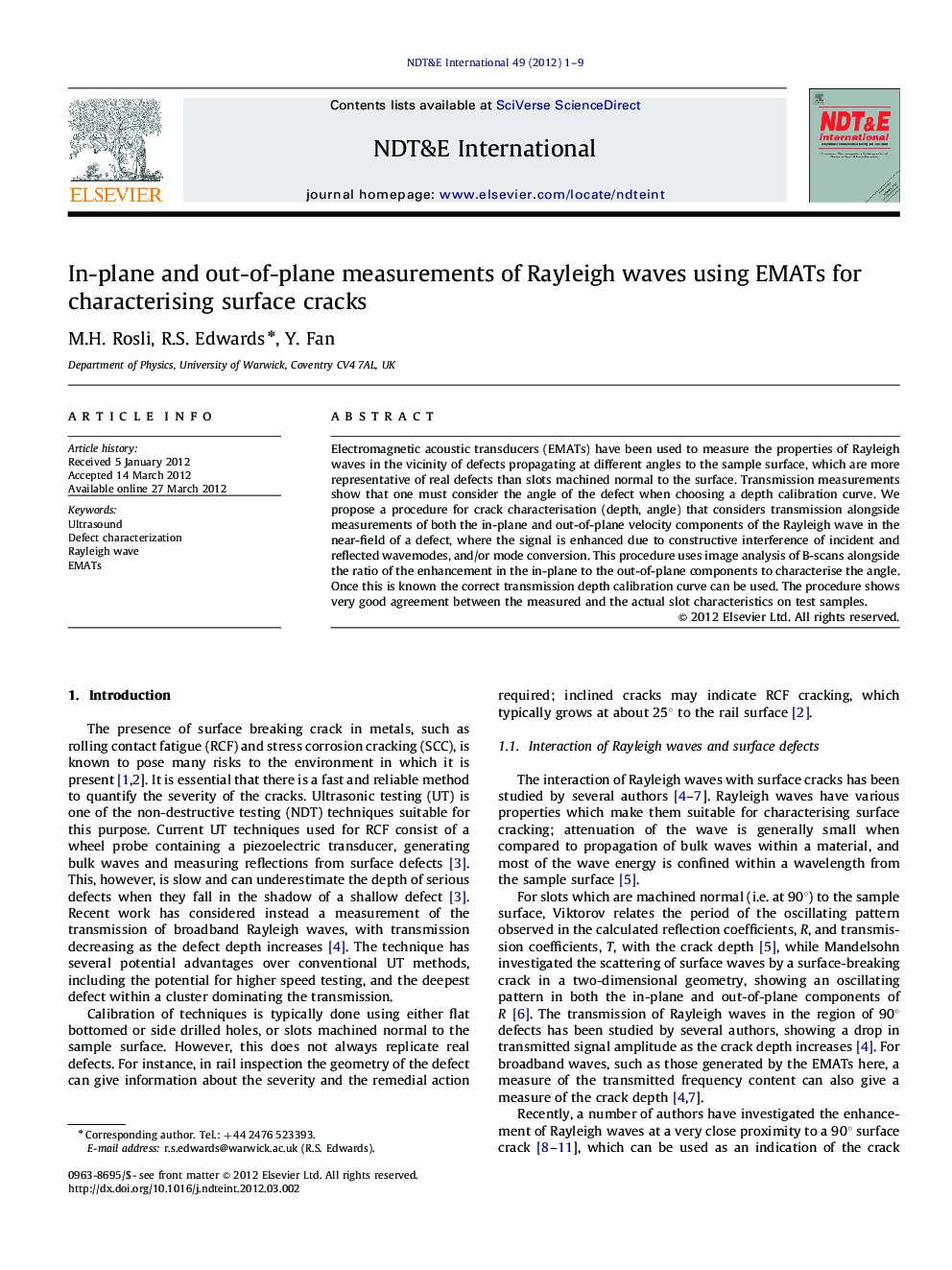| Article ID | Journal | Published Year | Pages | File Type |
|---|---|---|---|---|
| 295260 | NDT & E International | 2012 | 9 Pages |
Electromagnetic acoustic transducers (EMATs) have been used to measure the properties of Rayleigh waves in the vicinity of defects propagating at different angles to the sample surface, which are more representative of real defects than slots machined normal to the surface. Transmission measurements show that one must consider the angle of the defect when choosing a depth calibration curve. We propose a procedure for crack characterisation (depth, angle) that considers transmission alongside measurements of both the in-plane and out-of-plane velocity components of the Rayleigh wave in the near-field of a defect, where the signal is enhanced due to constructive interference of incident and reflected wavemodes, and/or mode conversion. This procedure uses image analysis of B-scans alongside the ratio of the enhancement in the in-plane to the out-of-plane components to characterise the angle. Once this is known the correct transmission depth calibration curve can be used. The procedure shows very good agreement between the measured and the actual slot characteristics on test samples.
